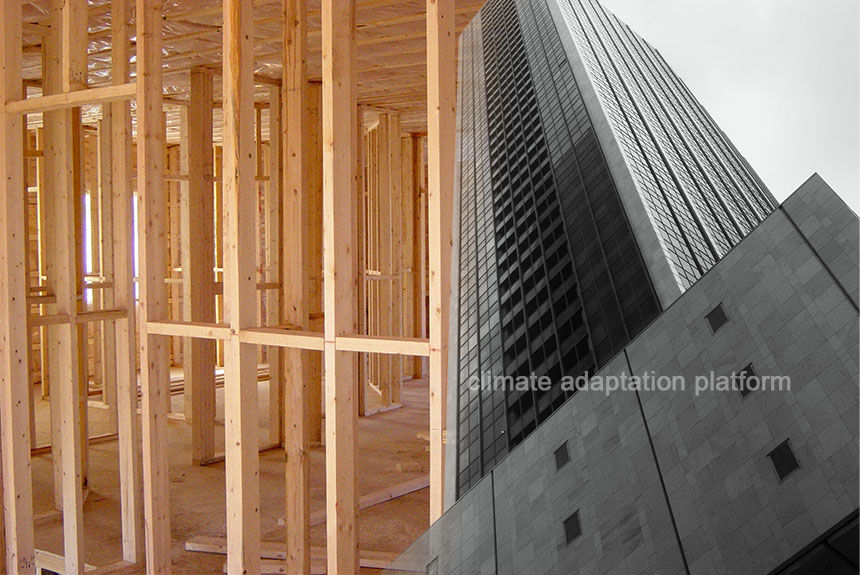The construction of wooden buildings has grown in popularity in recent years due to the drive to reduce carbon emissions. The world is witnessing a competition for building the tallest or largest wooden buildings.
The UK opened a 6-storey timber building in London, which has generated 37% less carbon than it would have been a concrete building of the same size.
Norway’s Mjøstårnet building is an 85-metre, 18-storey timber tower that holds the record as the tallest timber building when it opened in March 2019, until Wisconsin completed Ascent, an 86.6-metre, 25-storey wooden skyscraper was completed in July 2022.
Sweden announced in June 2023 that it plans to build a wooden skyscraper and an entire wooden city. Construction will begin in 2025, according to the Swedish real estate company Atrium Ljungberg.
According to the company, Stockholm Wood City will become the largest wooden city once completed, covering over 60 acres in the Sickla district. It will be home to 7000 office spaces and 2000 homes, restaurants, and shops.
Fire safety
One of the main concerns for any wooden structure, let alone a multi-storey wooden building, is its fire risk. The Economist reports that Sweden’s wood city will have several fire-protection system sprinklers and flame-resistant layers.
Also, researchers testing the fire susceptibility of engineered timber, “a composite in which layers of wood are laminated together in specific ways,” find that they are extremely fire resistant.
To help approve the construction of the Ascent building in Wisconsin, the US Forest Service carried out tests on the laminated timber columns it would use. They find it hard to burn, and the columns were awarded an exemplary three-hour fire-resistance rating because they maintained their structural integrity.
The engineered timber’s fire safety is compared to trying to light a campfire using only logs – it is difficult to burn it without little pieces of wood or branches to act as kindling first. The article notes that without a sustained source of heat or fire, the charring of the outer layer of a big piece of timber protects the structure inside.
Climate Adaptation Benefits of Working With Wood
A study on Frontiers shows that working with wood reduces construction time and the climate impact on buildings from one-third to a half. According to the authors, buildings play a role in meeting the Paris Agreement’s target of limiting global warming to 1.5 degrees and avoiding climate crises.
Buildings contribute 39% of the global energy-related GHG. Of this total, 20% accounts for operational emissions and 11% for energy use to produce structures and construction materials, otherwise known as embodied emissions.
Through photosynthesis, wood absorbs and sequesters CO2 from the air, decreasing the atmospheric CO2 level. The carbon dioxide stored in wood throughout their lifespan makes the increasing use of timber an effective strategy to lower the embodied GHG of buildings. The carbon sequestered by wood and other bio-based materials is called biogenic carbon.
This study examines existing life cycle assessments of wooden buildings by reviewing the reported embodied GHG emission results and methodological approaches used in the existing literature. The paper focuses on the challenges of accurately accounting for the biogenic carbon in LCA methods for wooden buildings, which is vital in evaluating the environmental impact of using wood or timber as construction materials.
The authors note that accurate accounting of biogenic carbon in timber as a construction material should consider forest management practises, wood decay over time, and end-of-life scenarios. Considering all these factors, including the building’s emissions over time, will help to get a more accurate measurement of the use of timber or wood as construction materials.
Source:
Sweden wants to build an entire city from wood. (2023, June 21). The Economist. Retrieved from https://www.economist.com/science-and-technology/2023/06/21/sweden-wants-to-build-an-entire-city-from-wood?
Cormack, R. (2023, June 30). Sweden Is Building the World’s Largest Wooden City. Robb Report. Retrieved from https://robbreport.com/shelter/new-construction/sweden-building-worlds-largest-wooden-city-1234862932/
Andersen CE, Rasmussen FN, Habert G and Birgisdóttir H (2021) Embodied GHG Emissions of Wooden Buildings—Challenges of Biogenic Carbon Accounting in Current LCA Methods. Retrieved from https://www.frontiersin.org/articles/10.3389/fbuil.2021.729096/full



Leave a Reply